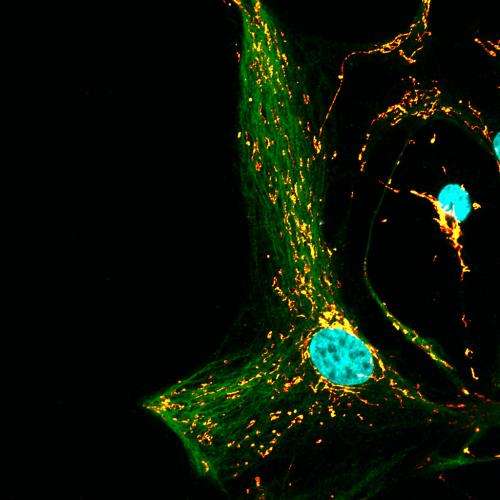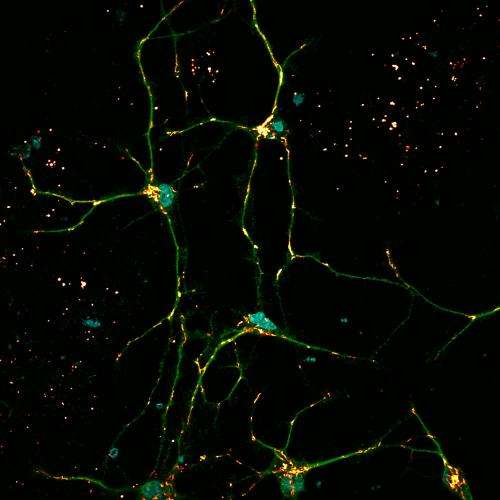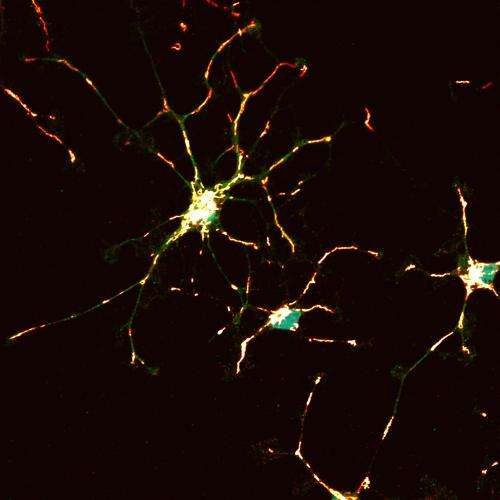Defective cellular waste removal explains why Gaucher patients often develop Parkinson's disease

Gaucher disease causes debilitating and sometimes fatal neurodegeneration in early childhood. Recent studies have uncovered a link between the mutations responsible for Gaucher disease and an increased risk of developing Parkinson's disease later in life. New research published online on May 23 in the Cell Press journal Cell Metabolism indicates that the neurodegeneration found in Gaucher disease stems from defects in processes that break down and remove unwanted material from cells. This defective trash removal in cells can lead to the toxic build-up of proteins found to be responsible for neurodegeneration in Parkinson's disease, providing insight into the link between the two diseases.
Investigators found that in Gaucher disease, defects in the cell's trash removal processes lead to a build-up of dysfunctional mitochondria, the energy-producing components of cells. Without an effective source of energy, neurons cannot function normally and eventually die. The failure to remove unwanted cellular material also causes the build-up of a protein called alpha synuclein, which accumulates in a toxic form in the brain's nerve cells of patients with Parkinson's disease. "The findings may help to explain the increased risk of Parkinson's disease amongst people carrying Gaucher's gene defects," says senior author Dr. Michael Duchen of University College London in the United Kingdom.

Dr. Duchen and his colleagues made their discoveries by studying the properties of neurons in a mouse model of severe neuropathic Gaucher disease. "Our data show that routine clearance of dysfunctional mitochondria is a critical aspect of normal cell health, and the failure of this pathway initiates a destructive cycle that culminates in the accumulation of damaged mitochondria," says Dr. Duchen. The researchers suggest that these damaged mitochondria generate increased amounts of free radicals instigating a domino effect that causes further damage to the remaining mitochondria.

The findings suggest that treatment strategies that target the trash removal and mitochondrial functions of cells might be developed to benefit patients with Gaucher and Parkinson's diseases.
More information: Cell Metabolism, Osellame et al.: "Mitochondria and quality control defects in a mouse model of Gaucher disease - links to Parkinson's Disease." dx.doi.org/10.1016/j.cmet.2013.04.014
















